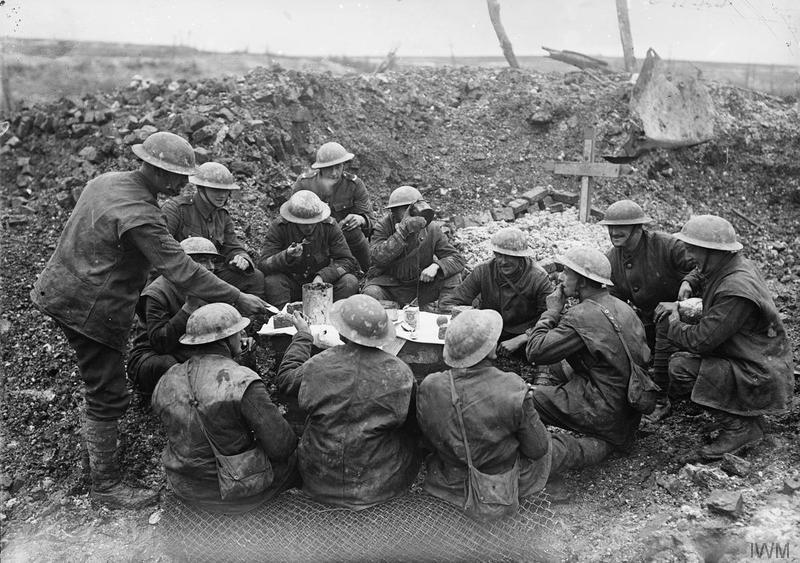
As we near Remembrance Sunday, I decided that the next historic dish to recreate would be from the cold trenches of The First World War.
I studied this war, and in particular the wartime poets, in great detail whilst at school. I recall myself and my entire class being captivated by the grim details and deeply sad personal stories from the First World War. Every lesson felt sombre and poignant, in what was usually a noisy, boisterous classroom.
The aspect of this war which struck me the most was the shock the British soldiers received when they realised the technology and scale of this war was like nothing before. Britain was a world superpower in 1914 and had swiftly won many wars before, but this was different, and the old guard did not foresee four years of horrific trench warfare.
Turning back to the food, at the start of the war the meat and veg rations the soldiers received were at generous levels – but by 1916 they had diminished considerably. Soldiers were having to hunt and fish, and all kinds of substitutes were introduced. These included diarrhoea-inducing bread made from ground up turnips (due to a flour shortage), soup served in sandbags and the infamous ‘saviour’ of Manochie soup.
The dish I created was simply named Trench Stew and is based on the stews made in the trenches using any ingredients the soldiers could gather. The vegetables would be taken from local fields or grown themselves, the bread would be stale, but the corned ‘bully’ beef would be a treasured supply. This would likely be made by one soldier on a camping stove within the trench, or in huge cauldrons at a base.

So, whilst picturing myself as the trench chef cooking for the lads on the little stove, within a muddy, ice-cold trench somewhere in Belgium, I began to peel the carrots, parsnip and turnip.
Once peeled, I chopped the carrots in little pieces and then the parsnip and turnip into larger chunks.
I then put one pint of boiling water on the hob with a stock cube, I used beef stock, and added the veg.

Whilst the veg was boiling, I pried open a tin of corned ‘bully’ beef, by turning the little key until the tin cuts in half.
Out came the beef and it looked a bit rank! I’ve never really eaten corned beef, it just looks a bit like dog food to me, but once the veg had softened I cut the beef in half and chucked it in – along with two breadsticks that were my version of stale bread!

I thought back to those filthy, freezing cold trenches, and this smell of veg and bully beef would have been incredibly uplifting. The stew did produce a lovely, heart-warming smell, and I could imagine calls of “hurry up!” if I was, indeed, the trench chef for the day. Before eating this dish, those men would have been cold, wet, tired, and starving hungry – not to mention having to deal with being shot at, having to shoot others and surviving the rat-infested trenches. All whilst being away from their families for months on end.

So, after a few minutes more of simmering, the stew was ready to be served – and I sat down with a stodgy bowl of comfort and energy from WW1.
The taste is expectedly hearty, salty and full of flavour from the beef. It’s simply a wintery, beef stew at the end of the day, and packed full of nutrition and energy. It is, actually, something I’ll do again as it’s incredibly filling.

There it is then, a small tribute to the men of The Great War, and as we say every year – we will remember them.